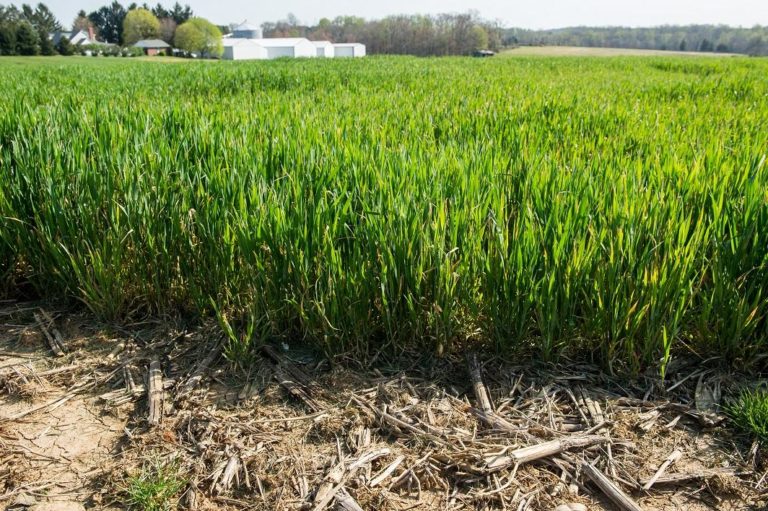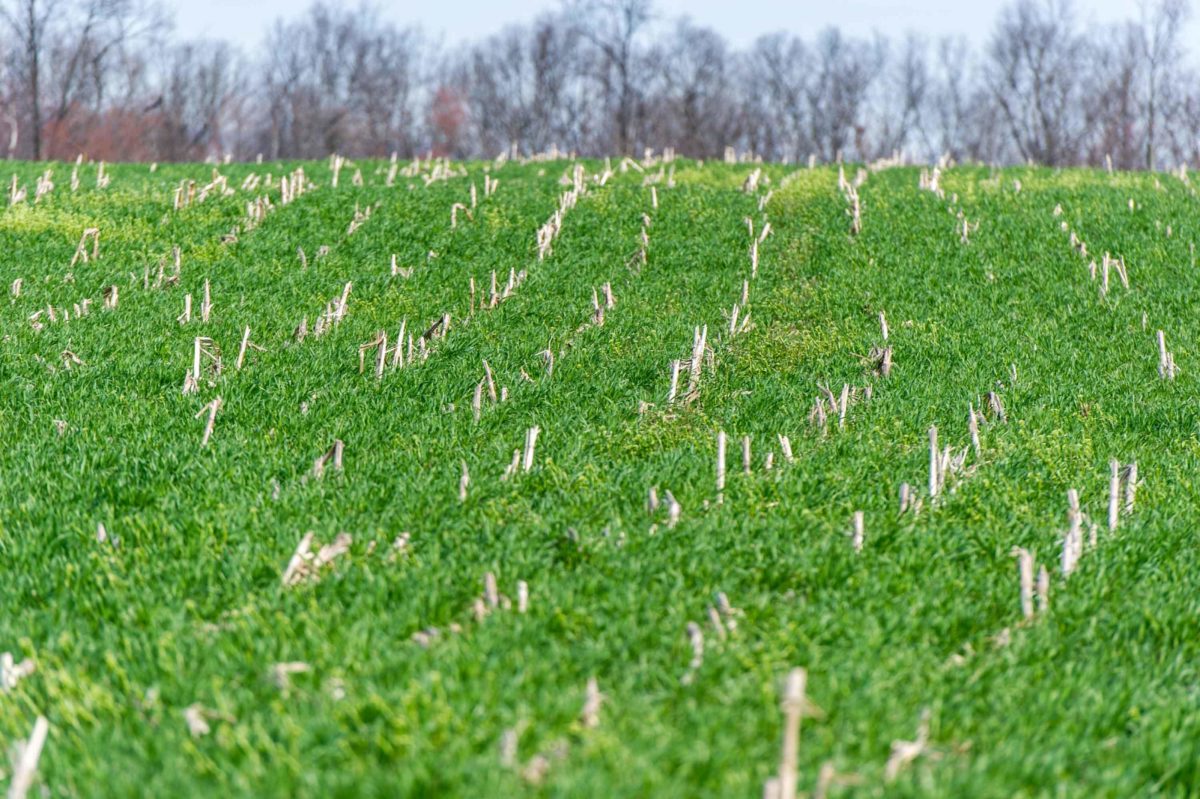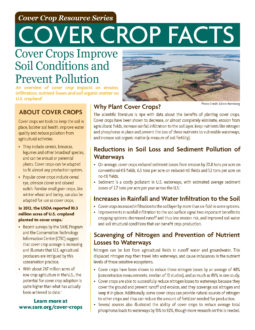An overview of how cover crops support birds.

Download this fact sheet. This fact sheet is part of the Ecosystem Services from Cover Crops fact sheet series.
How Do Birds Use Cover Crops?
Cover crops can provide important habitat throughout the year to songbirds and game birds alike. This fact sheet addresses how cover crops can support a variety of songbirds and game birds across all seasons.
- Commercially available cover crop mixes contain many of the same plants found in wildlife food plot mixes and will provide similar food and cover for turkeys, pheasants and other birds.
- Songbirds also use cover crops; a study in Illinois found more songbirds and waterfowl on cover cropped fields than on fields without cover crops.1
- Cover crops can help even some of the species most reliant on native grasslands by providing food, cover and, potentially, nesting habitat.
Winter Habitat
Vegetative cover is one of the most important requirements for birds that cover crops can provide, which is especially true in the fall and winter months when most fields are otherwise bare. Specific benefits can include:
- Resident birds like quail and some songbirds can find refuge and food in cover crops during the winter.
- Waterfowl and migratory birds will find cover cropped fields more appealing for resting and foraging than bare soil.
Nesting Season and Brooding Habitat
Birds that eat primarily insects can greatly benefit from the insect biomass in cover cropped fields. Come spring, many birds, including quail and turkeys, switch from a plant or seed-based diet to an insect-based diet because of the energy needed for breeding. Some bird species, such as larkspurs, may be able to nest before spring planting, while most others will have to contend with habitat disruption from planting. Although crop fields planted in spring may not be prime nesting habitat, they can still be very helpful before, during and after nesting.
- Cover crops can keep nests hidden from predators, which are typically the primary cause of nest failure.
- Nesting birds and chicks require insect fat and protein; insects are more abundant in cover crops than on bare or fallow fields.
- Game birds such as turkeys, quail and pheasants could increase nest success by building up energy reserves on food found in cover cropped fields before the cover crops are terminated, even though they may not nest directly in those fields.
Summer Habitat
Farmers who include a spring crop in their rotation, such as wheat, have an additional opportunity to support birds with cover crops.
- Buckwheat, millets and sunflowers are all warm season annuals commonly used as cover crops that are highly attractive to seed-eating birds, including turkeys.
- Doves will make use of seeds from summer annuals before and during their early fall migration.
- Some late-nesting birds like goldfinches or the occasional quail could use summer cover crops for nesting habitat.
Diverse Cover Crop Mixes are Better for Birds
Regardless of the season, a diverse mix of cover crops offers the most benefit to a variety of birds. Different species of birds prefer different food sources and different vegetation heights, and cover crop mixes provide both increased insect diversity and greater structural variation of plants compared to a pure stand of something like cereal rye.
Combining Cover Crops with Other Wildlife-Friendly Management Practices
Birds benefit the most when cover crops are combined with other soil health and conservation-oriented management practices. Pesticides can reduce spring chick survival by one third and are implicated in the decline of bird populations.2 Judicious use of pesticides leads to more insect biomass available to birds, and thus higher survival. Reduced tillage or no-till provide birds more food in the fall and winter in the form of crop residue. Most importantly, minimizing tillage and equipment passes through a field reduces the likelihood of destroying nests in the spring and early summer. No-till with cover crops terminated with an herbicide may be the most effective way to offer birds nesting habitat and avoid destroying too many nests. There is some evidence from quail research that no-till corn leaves enough nests undisturbed to sustain bird populations. Even if planting destroys nests, the food provided by cover crops and their residue could allow birds to successfully re-nest. Many species of grassland songbirds, as well as pheasants and ducks, are known to nest in no-till fields while shunning fields that have little residue. Field edges, shelter belts and fence rows also provide crucial nesting habitat and cover for birds while cash crops are growing.
Cover Crops Provide Dual Benefits for Soil and Wildlife
Many landowners like to put out some wildlife food plots. Since many of the same seeds used in wildlife mixes are also found in economical cover crops mixes, they are worth considering. The use of cover crop mixes not only supports wildlife on a farm, it also improves the soil when done in rotation with field crops. Improved soil health can pay dividends for wildlife in the long run as greater numbers and diversity of soil organisms, including earthworms, help support a balanced food chain of insects, songbirds and mammals.
About Cover Crops

Cover crops are tools to keep the soil in place, bolster soil health, improve water quality and reduce pollution from gricultural activities.
- They include cereals, brassicas, legumes and other broadleaf species, and can be annual or perennial plants. Cover crops can be adapted to fit almost any production system.
- Popular cover crops include cereal rye, crimson clover and oilseed radish. Familiar small grain crops, like winter wheat and barley, can also be adapted for use as cover crops.
1 Wilcoxen, C.A., J.W. Walk, and M.P. Ward. Use of cover crop fields by migratory and resident birds. Agriculture, Ecosystems and Environment. 252, 42–50 (2018).
2 Boatman, N., C. Stoate, and P. Watts. Practical management solutions for birds on lowland arable farmland. Ecology and Conservation of Lowland Farmland Birds. 105–114 (2000).
